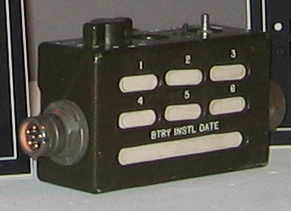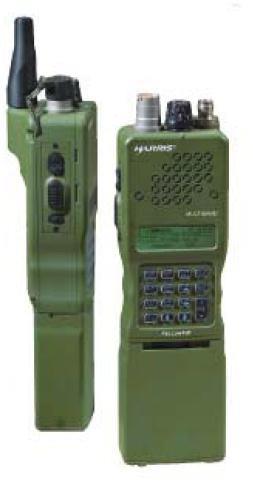
In cryptography, encryption is the process of transforming information in a way that, ideally, only authorized parties can decode. This process converts the original representation of the information, known as plaintext, into an alternative form known as ciphertext. Despite its goal, encryption does not itself prevent interference but denies the intelligible content to a would-be interceptor.

Communications security is the discipline of preventing unauthorized interceptors from accessing telecommunications in an intelligible form, while still delivering content to the intended recipients.
In cryptography, plaintext usually means unencrypted information pending input into cryptographic algorithms, usually encryption algorithms. This usually refers to data that is transmitted or stored unencrypted.
The Clipper chip was a chipset that was developed and promoted by the United States National Security Agency (NSA) as an encryption device that secured "voice and data messages" with a built-in backdoor that was intended to "allow Federal, State, and local law enforcement officials the ability to decode intercepted voice and data transmissions." It was intended to be adopted by telecommunications companies for voice transmission. Introduced in 1993, it was entirely defunct by 1996.

STU-III is a family of secure telephones introduced in 1987 by the NSA for use by the United States government, its contractors, and its allies. STU-III desk units look much like typical office telephones, plug into a standard telephone wall jack and can make calls to any ordinary phone user. When a call is placed to another STU-III unit that is properly set up, one caller can ask the other to initiate secure transmission. They then press a button on their telephones and, after a 15-second delay, their call is encrypted to prevent eavesdropping. There are portable and militarized versions and most STU-IIIs contained an internal modem and RS-232 port for data and fax transmission. Vendors were AT&T, RCA and Motorola.

The TSEC/KW-26, code named ROMULUS, was an encryption system used by the U.S. Government and, later, by NATO countries. It was developed in the 1950s by the National Security Agency (NSA) to secure fixed teleprinter circuits that operated 24 hours a day. It used vacuum tubes and magnetic core logic, replacing older systems, like SIGABA and the British 5-UCO, that used rotors and electromechanical relays.
The National Security Agency took over responsibility for all US government encryption systems when it was formed in 1952. The technical details of most NSA-approved systems are still classified, but much more about its early systems have become known and its most modern systems share at least some features with commercial products.
The Electronic Key Management System (EKMS) is a United States National Security Agency led program responsible for Communications Security (COMSEC) key management, accounting, and distribution. Specifically, EKMS generates and distributes electronic key material for all NSA encryption systems whose keys are loaded using standard fill devices, and directs the distribution of NSA produced key material. Additionally, EKMS performs account registration, privilege management, ordering, distribution, and accounting to direct the management and distribution of physical COMSEC material for the services. The common EKMS components and standards facilitate interoperability and commonality among the armed services and civilian agencies.
VINSON is a family of voice encryption devices used by U.S. and allied military and law enforcement, based on the NSA's classified Suite A SAVILLE encryption algorithm and 16 kbit/s CVSD audio compression. It replaces the Vietnam War-era NESTOR (KY-8/KY-28|28/KY-38|38) family.

This glossary lists types of keys as the term is used in cryptography, as opposed to door locks. Terms that are primarily used by the U.S. National Security Agency are marked (NSA). For classification of keys according to their usage see cryptographic key types.
Over-the-air rekeying (OTAR) refers to transmitting or updating encryption keys (rekeying) in secure information systems by conveying the keys via encrypted electronic communication channels. It is also referred to as over-the-air transfer (OTAT), or over-the-air distribution (OTAD), depending on the specific type, use, and transmission means of the key being changed. Although the acronym refers specifically to radio transmission, the technology is also employed via wire, cable, or optical fiber.

TSEC/KY-68 DSVT, commonly known as Digital Subscriber Voice Terminal, is a US military ruggedized, full- or half-duplex tactical telephone system with a built-in encryption/decryption module for secure traffic.

The KYK-13 Electronic Transfer Device is a common fill device designed by the United States National Security Agency for the transfer and loading of cryptographic keys with their corresponding check word. The KYK-13 is battery powered and uses the DS-102 protocol for key transfer. Its National Stock Number is 5810-01-026-9618.
A High Assurance Internet Protocol Encryptor (HAIPE) is a Type 1 encryption device that complies with the National Security Agency's HAIPE IS. The cryptography used is Suite A and Suite B, also specified by the NSA as part of the Cryptographic Modernization Program. HAIPE IS is based on IPsec with additional restrictions and enhancements. One of these enhancements includes the ability to encrypt multicast data using a "preplaced key". This requires loading the same key on all HAIPE devices that will participate in the multicast session in advance of data transmission. A HAIPE is typically a secure gateway that allows two enclaves to exchange data over an untrusted or lower-classification network.

The AN/PYQ-10 Simple Key Loader (SKL) is a ruggedized, portable, hand-held fill device, for securely receiving, storing, and transferring data between compatible cryptographic and communications equipment. The SKL was designed and built by Ralph Osterhout and then sold to Sierra Nevada Corporation, with software developed by Science Applications International Corporation (SAIC) under the auspices of the United States Army. It is intended to supplement and eventually replace the AN/CYZ-10 Data Transfer Device (DTD). The PYQ-10 provides all the functions currently resident in the CYZ-10 and incorporates new features that provide streamlined management of COMSEC key, Electronic Protection (EP) data, and Signal Operating Instructions (SOI). Cryptographic functions are performed by an embedded KOV-21 card developed by the National Security Agency (NSA). The AN/PYQ-10 supports both the DS-101 and DS-102 interfaces, as well as the KSD-64 Crypto Ignition Key. The SKL is backward-compatible with existing End Cryptographic Units (ECU) and forward-compatible with future security equipment and systems, including NSA's Key Management Infrastructure.

The AN/PRC-152 Multiband Handheld Radio, is a portable, compact, tactical software-defined combat-net radio manufactured by Harris Corporation. It is compliant without waivers to the Joint Tactical Radio System (JTRS) Software Communications Architecture (SCA). It has received NSA certification for the transmission of Top Secret data.
FASCINATOR is a series of Type 1 encryption modules designed in the late-1980s to be installed in Motorola SECURENET-capable voice radios. These radios were originally built to accept a proprietary Digital Voice Protection (DVP) or a DES-based encryption module that was not approved by NSA for classified communications. The FASCINATOR modules replaced the standard modules and can be used for classified conversations at all levels when used with appropriately classified keys. FASCINATOR operates at 12 kbit/s for encryption and decryption. It is not compatible with other encryption schema.
The KIK-30 "Really Simple Key loader" (RASKL) is a fill device made by Sypris Electronics and approved by the US National Security Agency for the distribution of NSA Type 1 cryptographic keys. It can also store and transfer related communications security material, including control data for frequency hopping radios, such as SINCGARS and Have Quick. It can store up to 40 cryptographic keys and has male and female U-229 connectors for the NSA DS-101 and 102 fill protocol, allowing it to be plugged into most other NSA fill devices and EKMS equipment. It is 6.14 inches long, weighs less than one pound and is powered by four AAA batteries. The operator interface has an 8 line of 20 characters and 6 buttons, with what Sypris calls "1-button key squirt" and 2-button zeroize.

The AN/PRC-163 Multi-channel Handheld Radio, is a dual-channel tactical handheld radio manufactured by L3Harris Technologies, Inc. for the U.S. military, referred to by the U.S. Army as the Leader Radio. It is capable modes such as VHF/UHF Line-of-Sight (VULOS), SINCGARS, Soldier Radio Waveform, Tactical Scalable MANET, P25 as well as the Mobile User Objective System satellite communication mode. The dual channel capability allows a soldier to simultaneously communicate on two separate radio networks. It has received NSA certification for the transmission of Top Secret information with an appropriate encryption key. The PRC-163 is one of the Handheld, Manpack & Small Form Fit (HMS) components of the Integrated Tactical Network family of radios, the U.S. Army's modernization strategy for tactical radios. It is a member of L3Harris' Falcon IV family of tactical radios, and the successor to the Falcon III-family AN/PRC-152 Multiband Handheld Radio.











